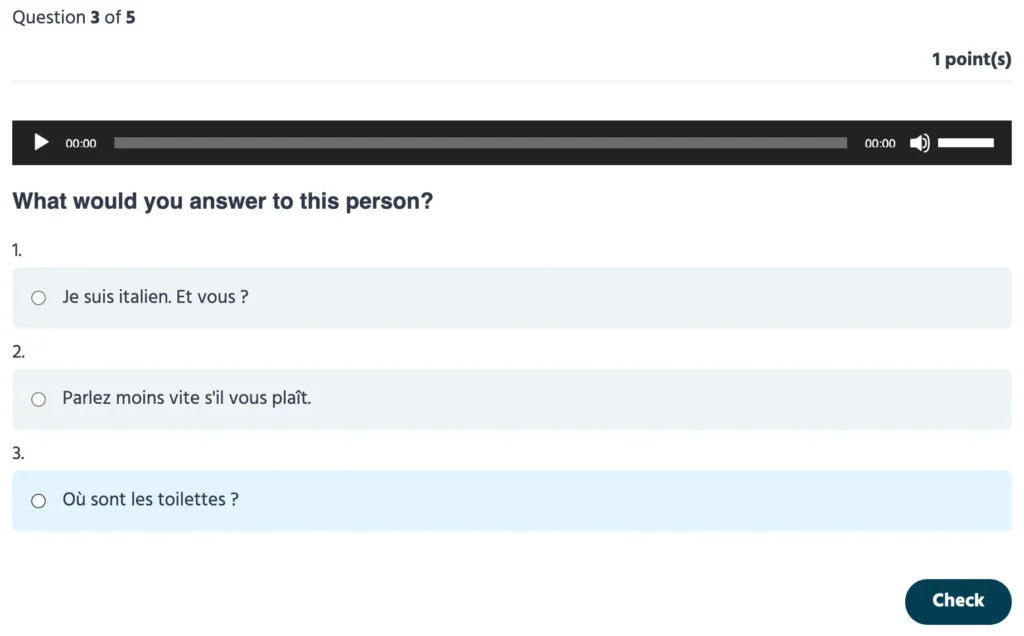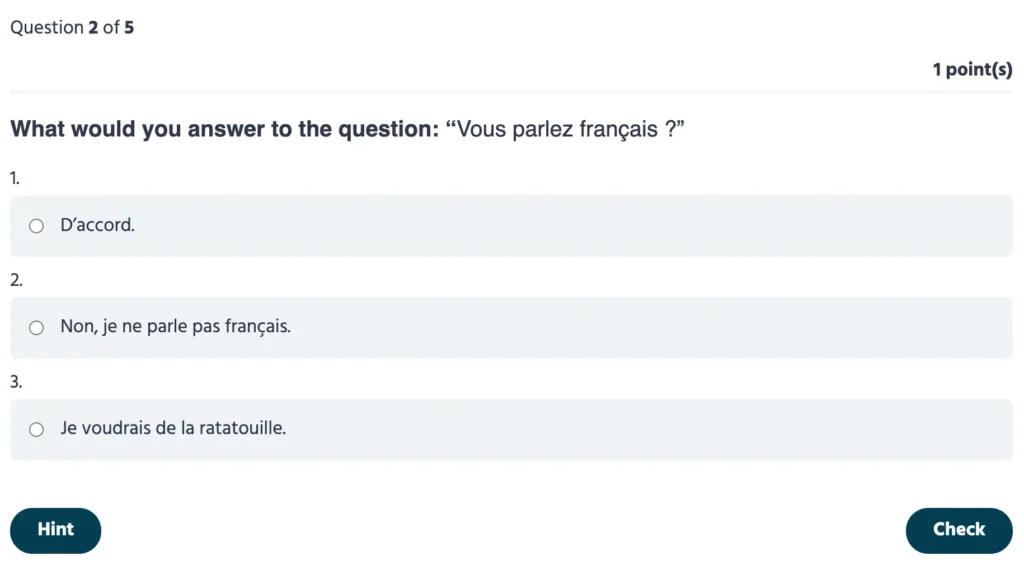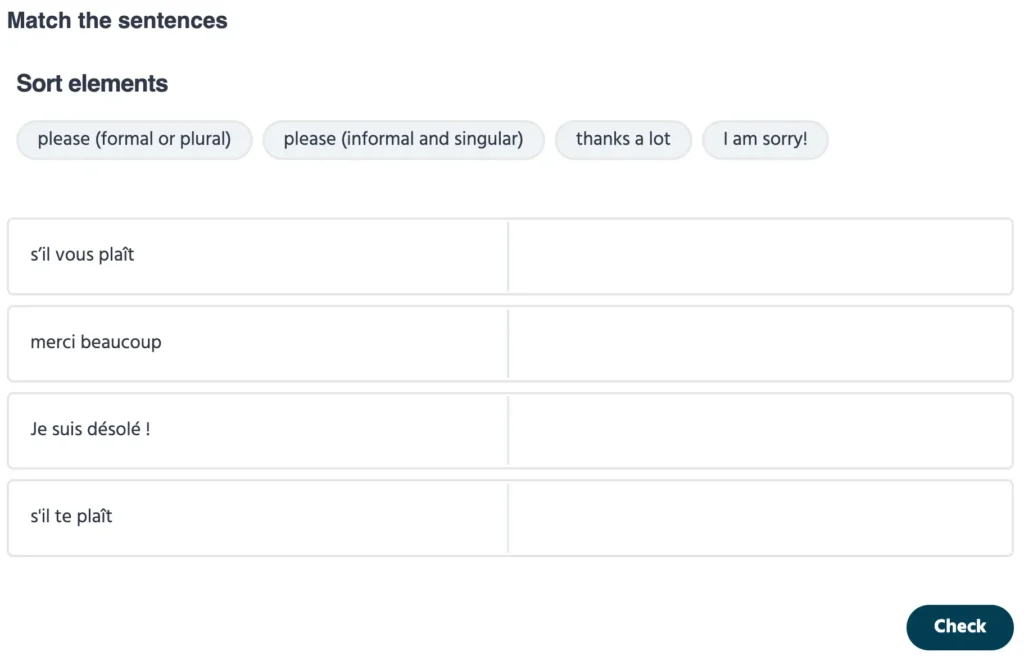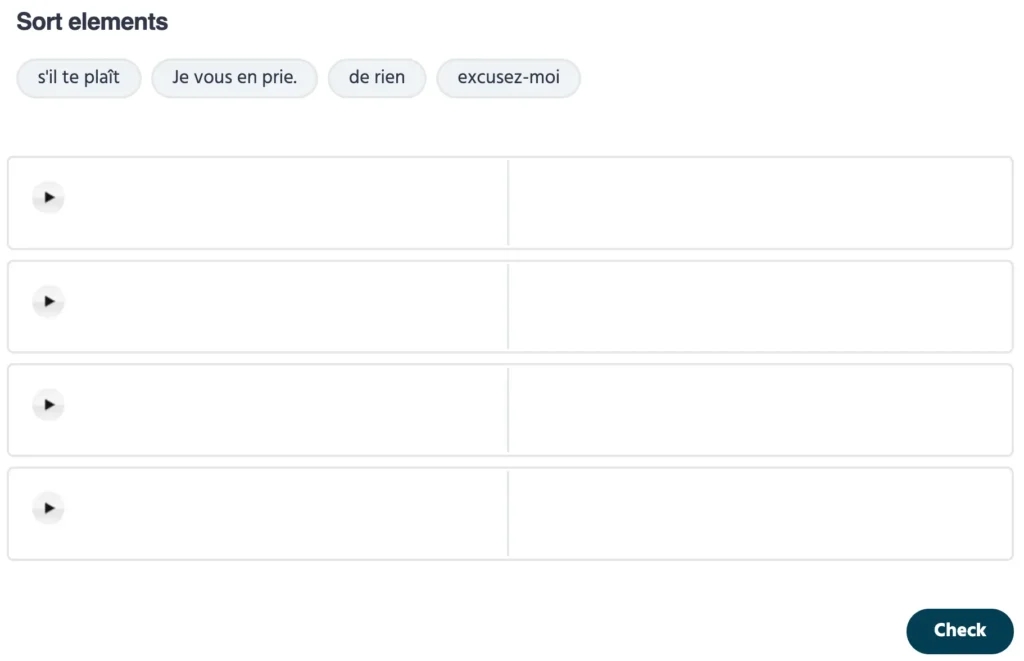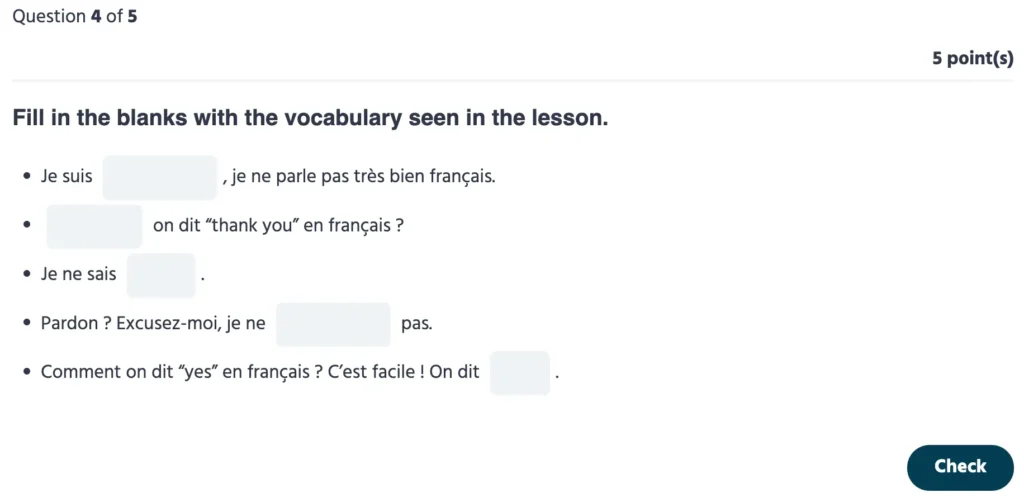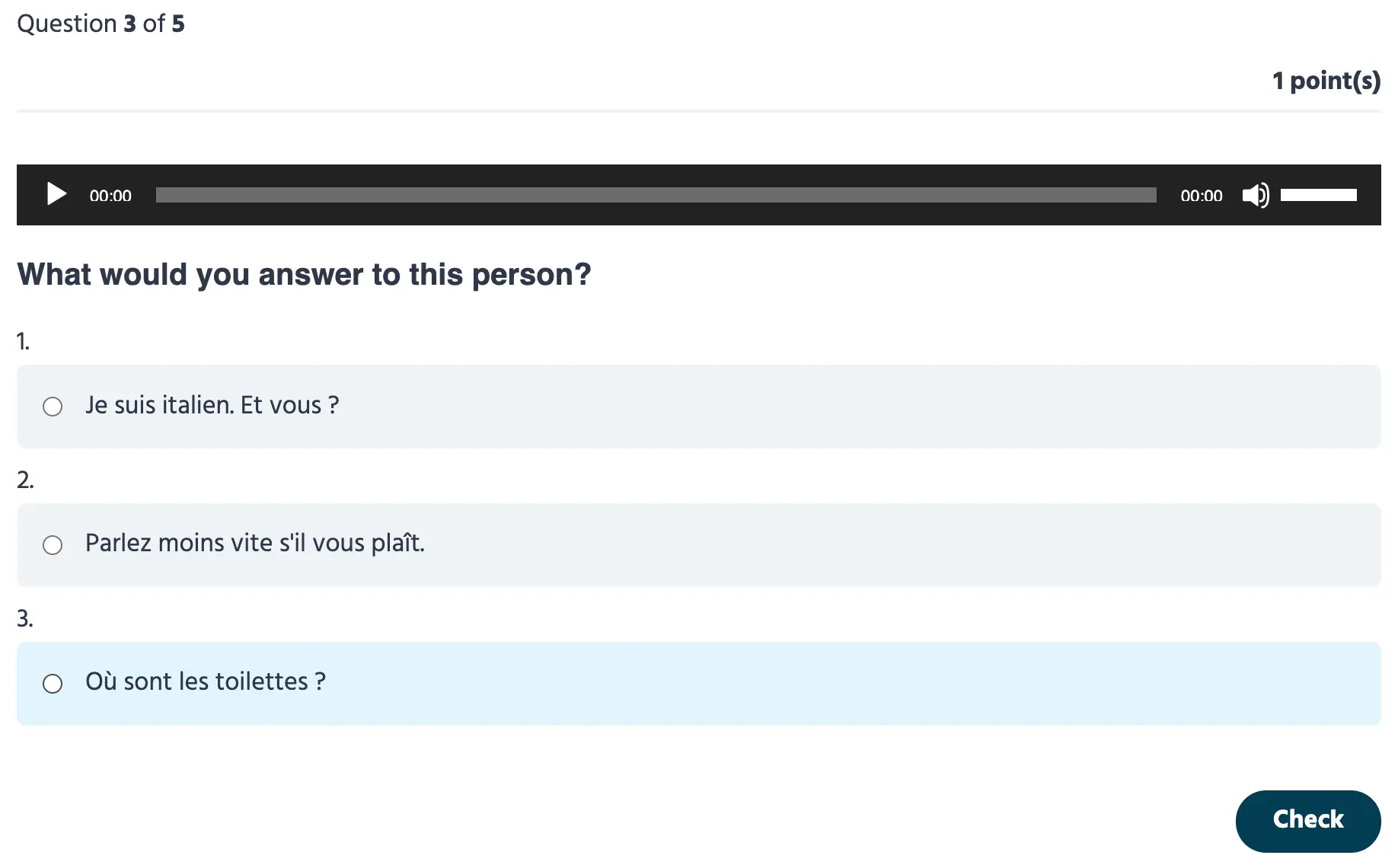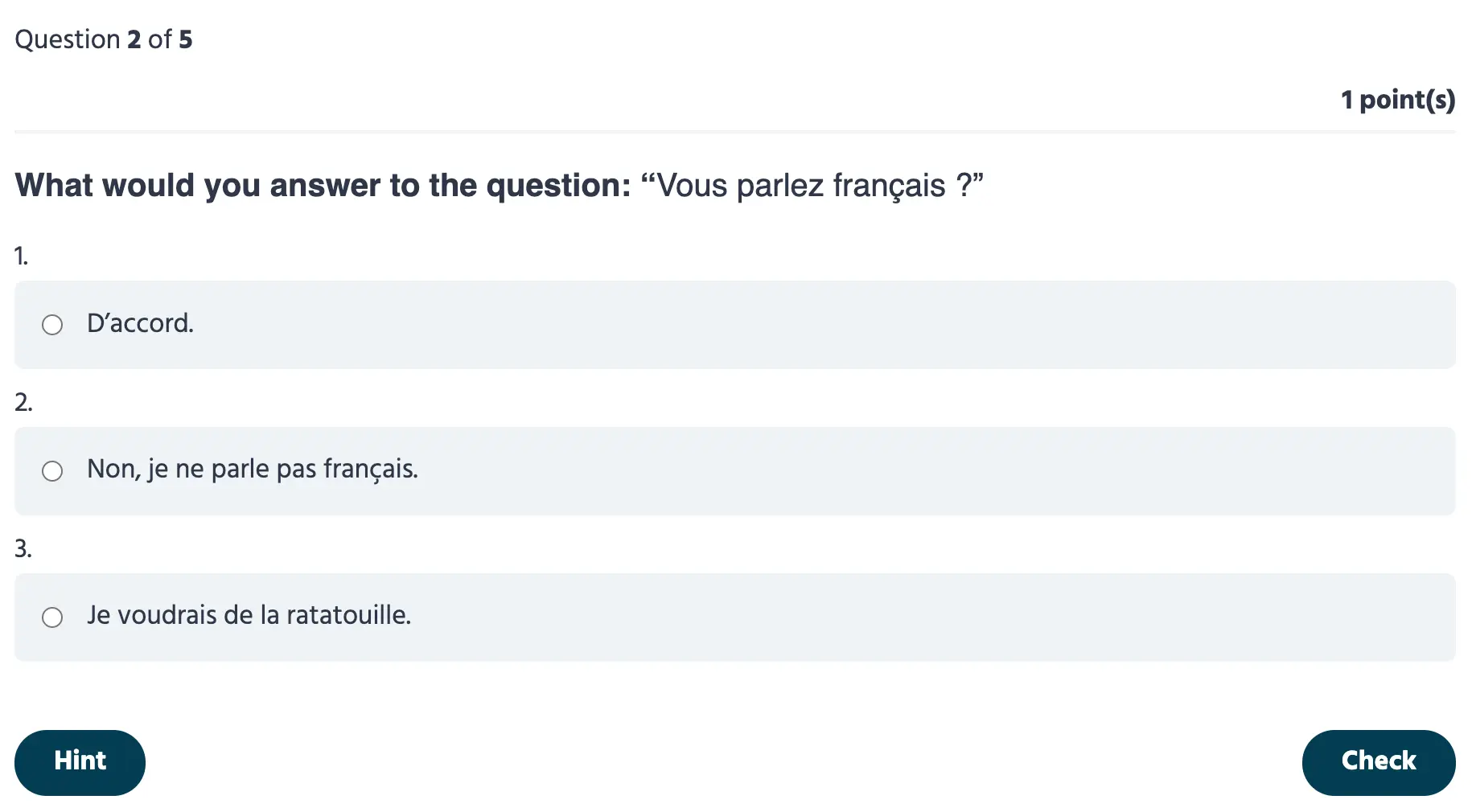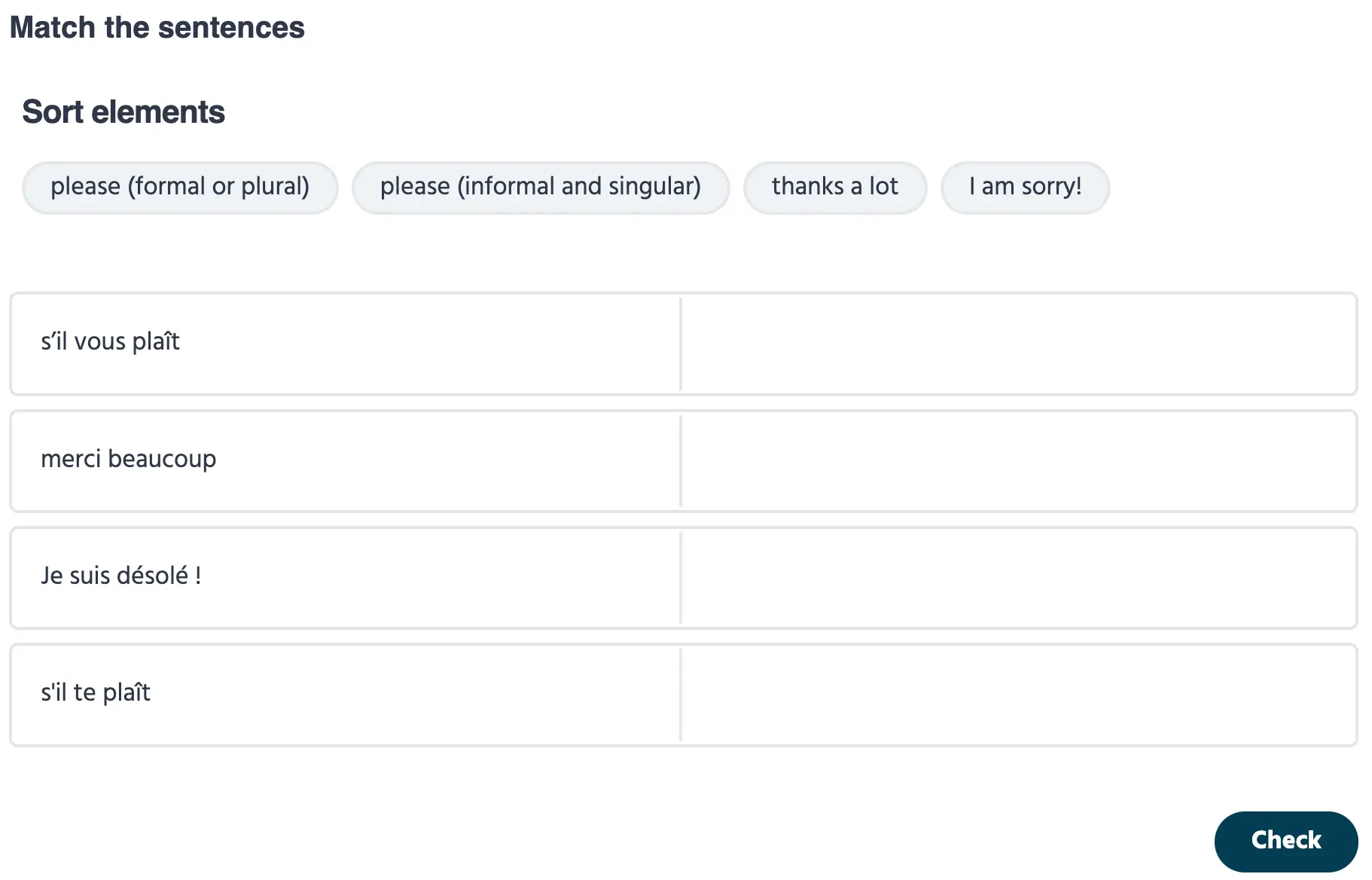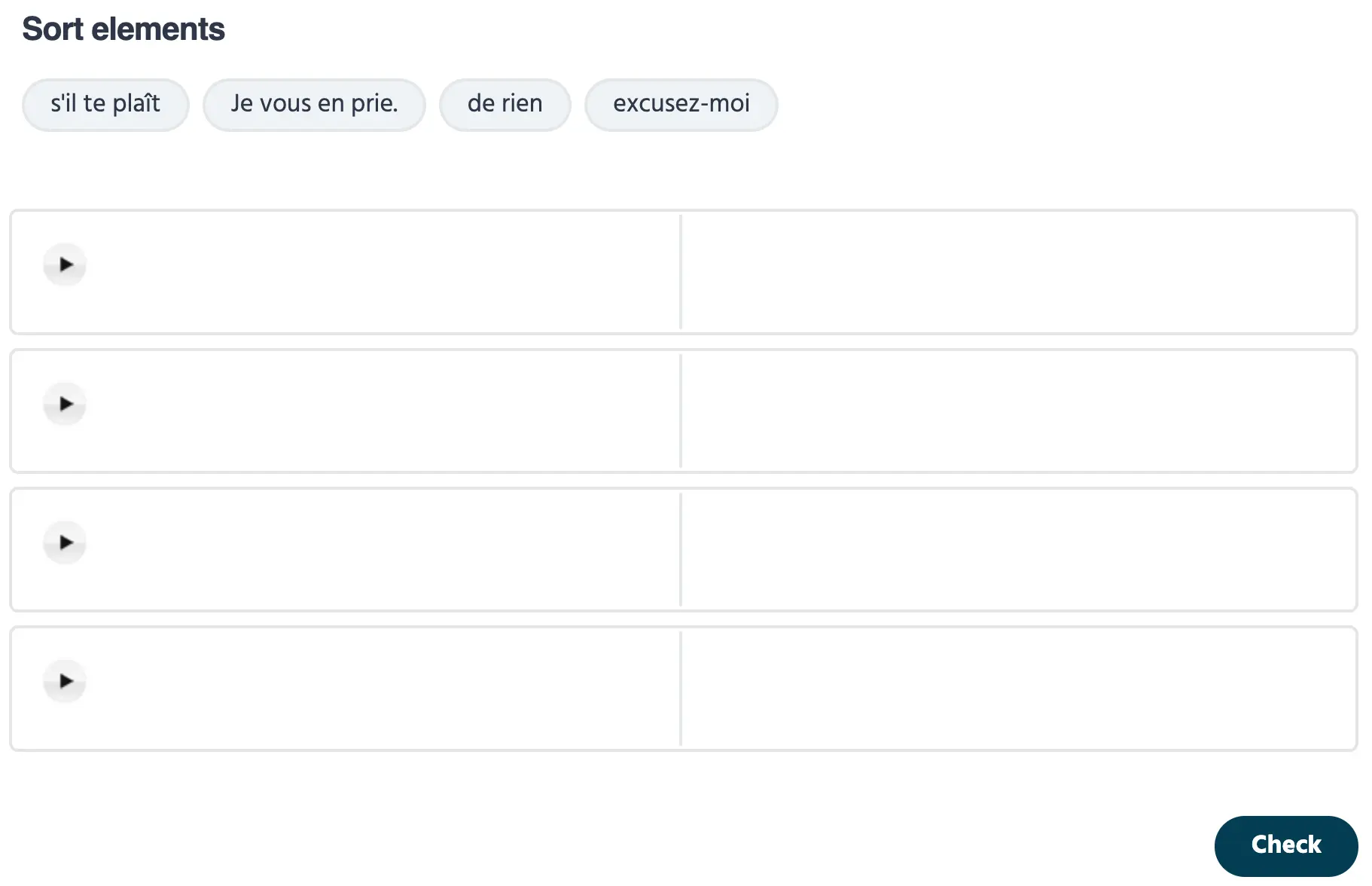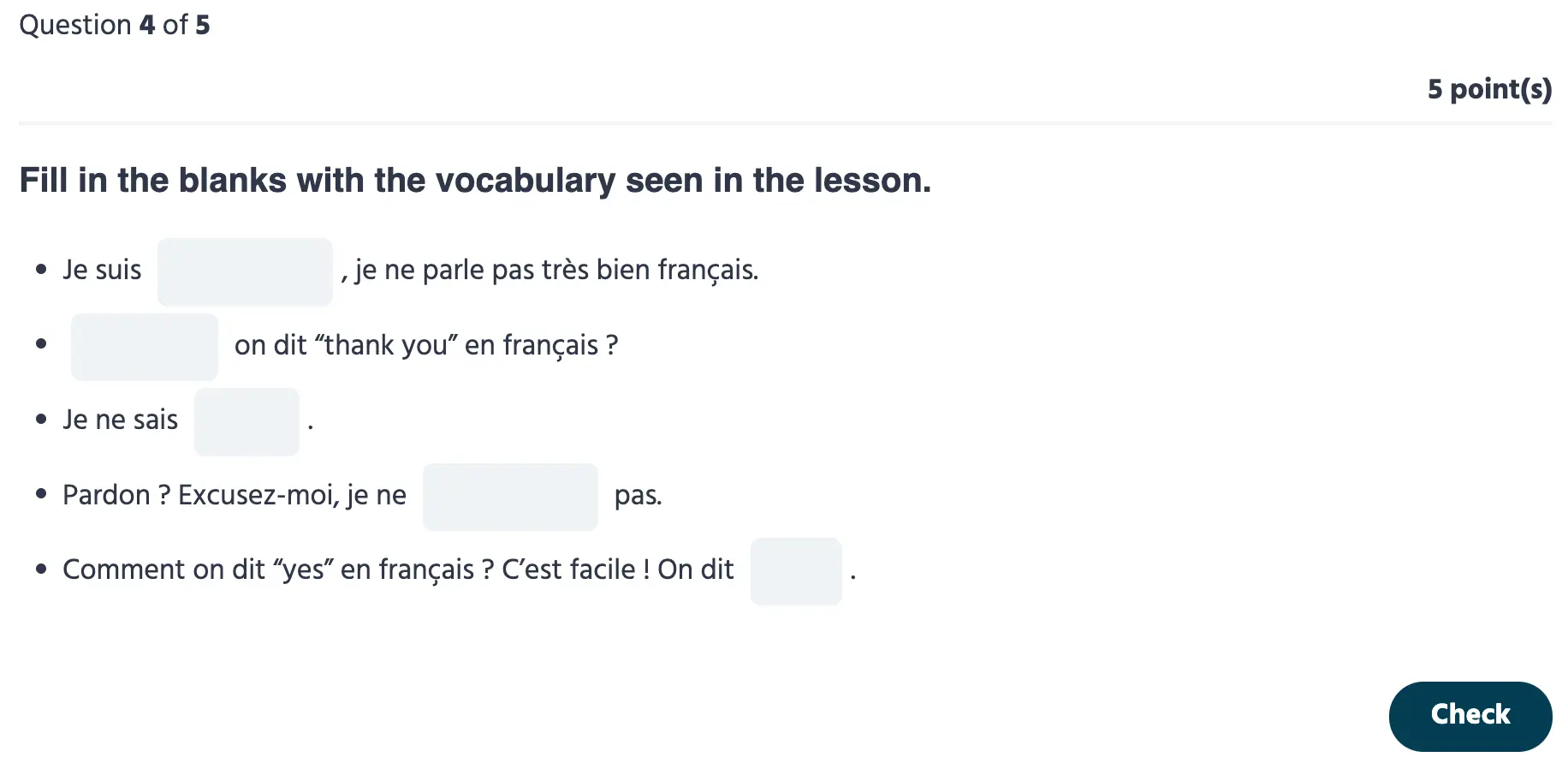French E-learning A1 programme
Sorry, the content you are trying to view is reserved for E-learners registered on OnlineFrenchTeacher.com.
The French E-learning A1 programme is an online French language learning programme for beginners. It is designed for anyone who wants to start learning the French language and culture, or simply review all the basics of the French language.
This programme consists of a multitude of lessons and exercises which gradually guide the student towards understanding and mastering the French language at A1 level.

The lessons are divided into the following categories: vocabulary, grammar, conjugation, pronunciation, culture and savoir-faire.
What makes this programme so unique and effective?
Designed and developed by an experienced native French teacher
This programme is the result of over 15 years of teaching French as a Foreign Language throughout the world. It was developed by Anthony Lucas, a French teacher.

Authentic French
The French lessons focus on teaching authentic language skills by incorporating real-life contexts, cultural experiences, and practical applications. Emphasising current idioms and colloquial expressions, the curriculum ensures that students gain not only a formal understanding but also the ability to navigate real-world French conversations with confidence.
A coherent progression
The programme has been designed so that the discovery and learning of French takes place very gently, starting with the easiest basic concepts and progressing gradually to more complex notions. For this reason, the programme is made up of a large number of precise lessons, which are as short as possible to facilitate assimilation.
Listen to plenty of audios
One of the main difficulties when learning French is pronouncing typically French sounds that do not exist in English, for example. The solution to this challenge is to practise listening comprehension using thousands of audio documents (mp3). In practical terms, you can listen to (and repeat!) the pronunciation of all the French vocabulary presented throughout the programme.
Self-corrected exercises
Practice is essential! The first step is obviously to understand the lesson. But in order to make learning more concrete and increase memorisation, it’s crucial to use what you’ve learned in a practical way, through exercises. To validate a lesson, you need to validate your knowledge with self-correcting exercises.
Fun style
Learning a new language can be tedious or even boring. That’s without counting the dynamism and humour sprinkled throughout the lessons in this programme! Everything is done to make learning French a pleasure, not a chore!
Ease of learning
From your phone, tablet or computer, it’s easy to study French whenever and wherever you want! You have complete freedom to organise your learning to suit your schedule.
Flexibility of learning
As mentioned earlier, the programme is organised according to a logical progression, a predetermined order, as if your French teacher were holding your hand all along the way. But you don’t have to strictly follow this order. If you wish, you are free to discover the lessons that pique your curiosity at any time. If you’re looking for a specific topic, you can use the French Lessons Finder, a mini search engine for online lessons.
Programme structure
This programme for beginners is organised around 4 main objectives:
Within these 4 main parts, the lessons are organised into units. Each unit comprises between 4 and 7 lessons. There are 22 units in all.
Unit structure
Each unit represents an objective, such as “Giving my name” or “Introducing my family”. The corresponding lessons provide grammar, vocabulary, pronunciation and conjugation tools to help you achieve this objective.
In each unit, a lesson in the “Savoir-faire” category provides concrete answers to the unit’s objective.
Culture lessons are devoted to studying and understanding French behaviour and habits, the country and its rules, and the context in which the French language is spoken.

Lesson structure

Header
For each lesson is indicated the level (A1 for this level), the category (vocabulary, grammar, conjugation, pronunciation, culture or savoir-faire) and an estimate of the time needed to read the lesson.
A short introduction provides a quick understanding of the theme of the lesson.
Content
The core of the lessons is obviously made up of explanations (in English) and numerous examples with the pronunciation (audio document) and English translation each time.


Cultural illustrations
The pink boxes are cultural references, related to the lesson themes. They can be a video, a picture, a cartoon, an audio file …
Closure
The last part of each lesson is a conclusion to help you retain the essential information of the lesson and sometimes a few tips to help you learn better.

Exercise structure
Practice is the key to progress. At the end of the lessons you will find links to go and practice what you have learnt.
Various types of exercise are used to practise and memorise the grammar concepts, vocabulary and pronunciation covered in the lessons.
To validate a lesson, a minimum pass mark of 80% is required. Exercises can be repeated as many times as necessary.
The programme
The core of the A1 learning programme: the CEFR defined by the Council of Europe
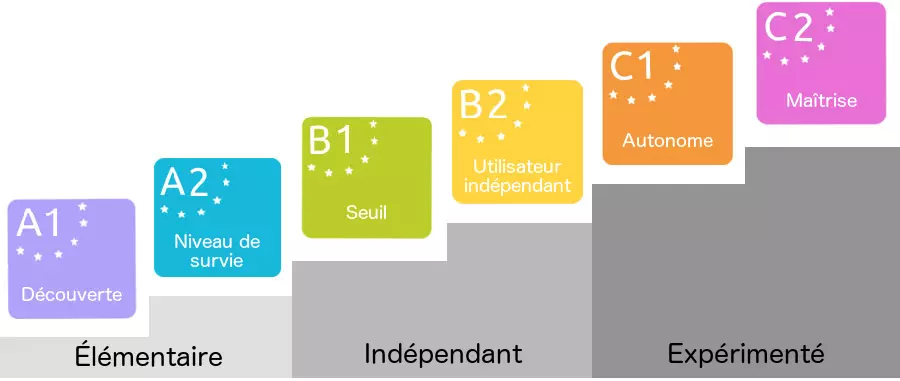
This programme has been specially developed for beginners in French, based on the requirements of level A1 as defined by the CEFR (Common European Framework of Reference for Languages), which is a guide used to describe the results achieved by foreign language learners throughout Europe.
The CEFR was drawn up by the Council of Europe between 1986 and 1989 as part of the “Language Learning for European Citizenship” project. In November 2001, a resolution of the Council of the European Union recommended the use of the CEFR to set up systems for validating language skills. The six reference levels (A1, A2, B1, B2, C1, C2) are becoming increasingly widely accepted as the European standard for assessing an individual’s language skills.
A1 level objectives
Basically, the 3 main points describing A1 level are as follows:
Content of the programme
The names of the units clearly indicate the concrete communication objectives you will have as you learn. When you have completed this programme, you will be able to:
Access the programme
The first 2 units are already opened to anyone 😀
There are 3 options for gaining access to the entire e-learning platform:

